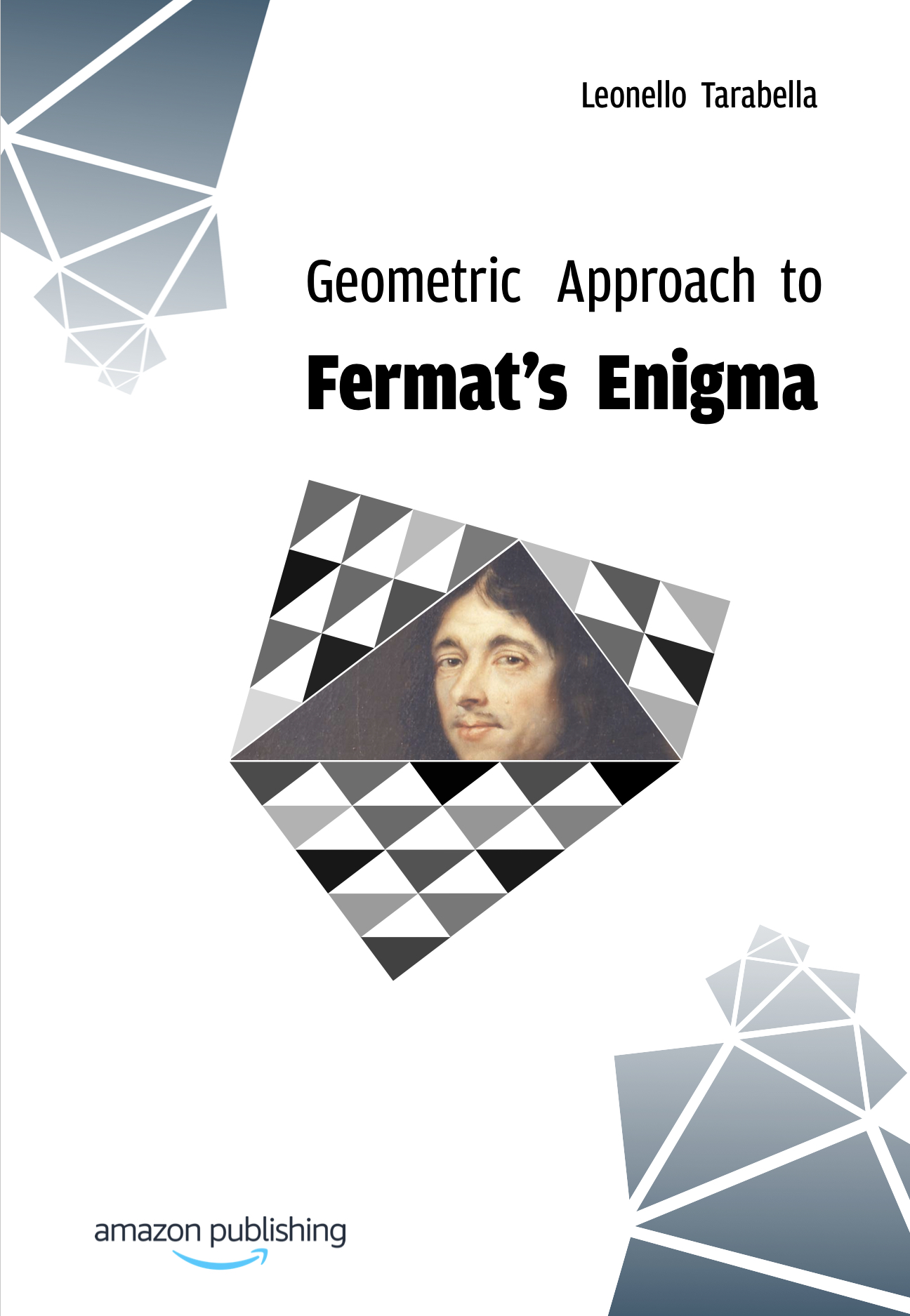
This view of Fermat’s Enigma makes use mainly of Euclidean geometry and basic arithmetics, “getting us back” to the Fermat’s era when mathematics was not yet the mature science it is today.
No attempt of any kind to demonstrate mathematically the FLT but, rather, an exposition of facts as the latin word demonstratio in Roman Law suggests to mean.
Some observations about the misleading habit to say square to mean of second power or power 2, are taken into consideration.
Starting from Pappo’s geometric proof of Pythagoras’s Theorem, attention is focused on rectangles rather than on cubes and hypercubes, remaining in 2D domain instead of jumping in 3D and beyond.
The many drawings reported have been generated by means of a computer application properly implemented, able to show in real time demos different situations for any P-Triple with any exponent.
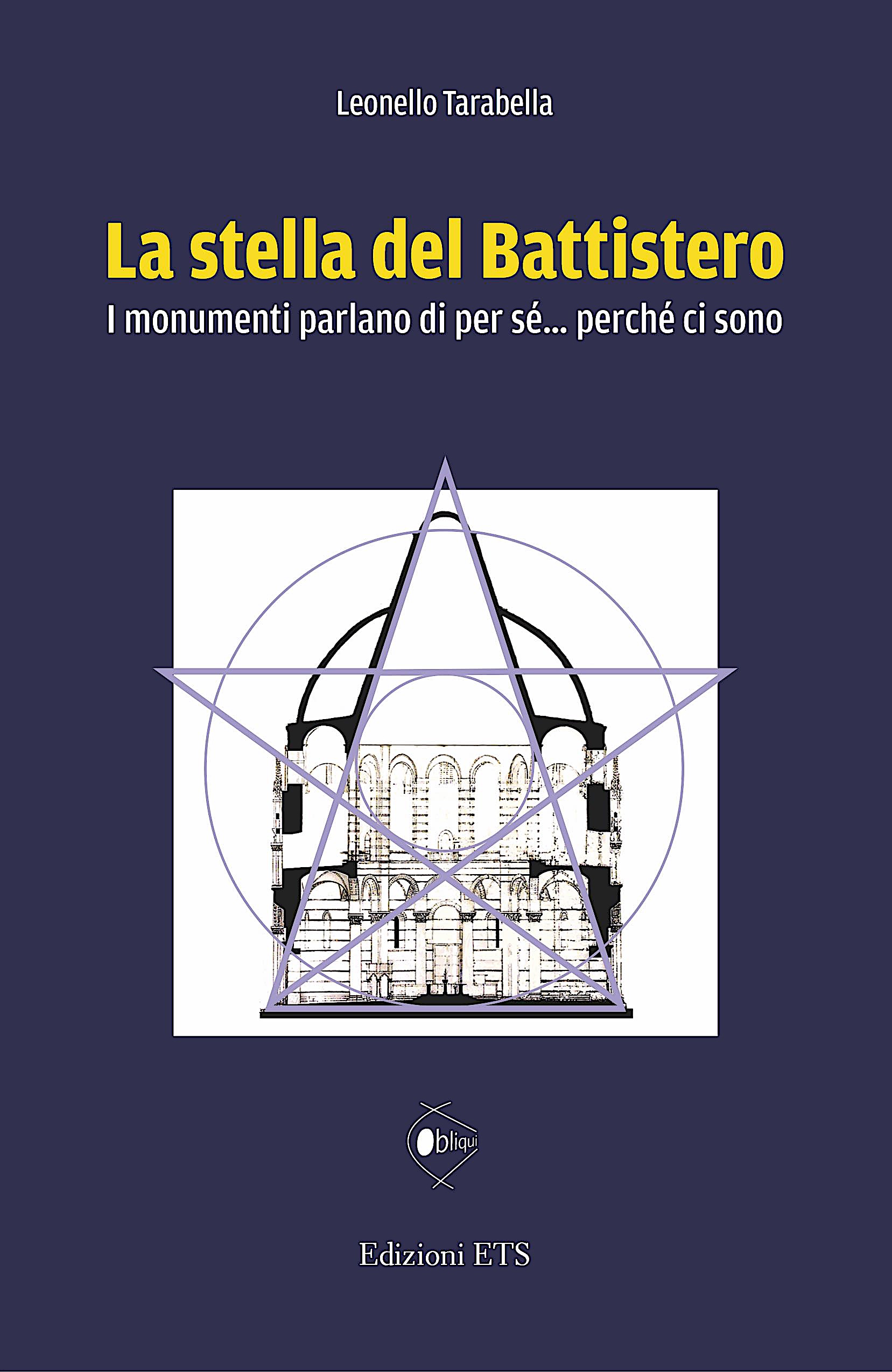
Sono state le parole «i monumenti parlano di per sé... perché ci sono», pronunciate spesso da Monsignor Silvano Burgalassi, a suggerirmi il percorso narrativo che mette in successione la Cappella di Sant’Agata, la Chiesa di San Sepolcro e il Battistero come momenti dell’evoluzione artistica di Deotisalvi.
Questo libro consta di due parti: il romanzo, che racconta le fasi progettuali dei monumenti di Deotisalvi, e la parte tecnica che illustra col simbolismo della matematica ciò che il romanzo propone con il linguaggio della geometria.
Il romanzo, collocato temporalmente nella prima metà del XII secolo, è frutto di una visione onirica, di un sogno che immagina e tratteggia la personalità di Deotisalvi: un’anima semplice e profonda che sa parlare tanto con naviganti, locandiere e carovanieri quanto con i notabili della sua città; una mente creativa che in tutto vede l’armonia delle forme con gli occhi del geomètra.
Il Deotisalvi dell’amico Leonello non è una stella che vuole brillare da sola: l’ingenuo artigiano costruttore di chiese che aspirava a essere promosso da “Fabricator” a “Magister”, ci aiuta a ricostruire un contesto che altrimenti avremmo molta dif coltà a percepire perché storia per soli geni. Il Deotisalvi qui raccontato –così raccontato– è una guida al conoscere.
Piero Pierotti
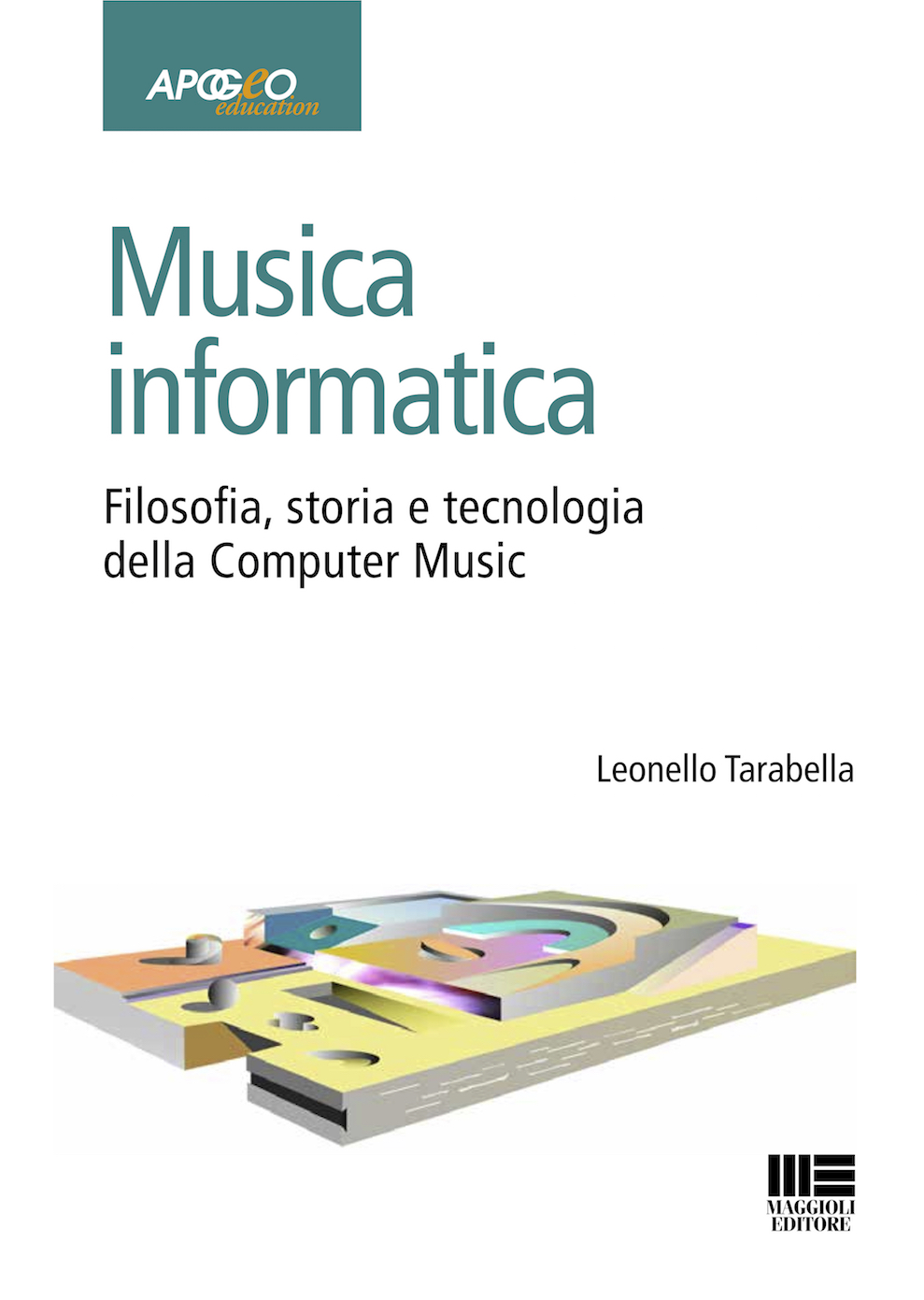
Questo libro è il risultato dell'esperienza acquisita durante molti anni di insegnamento presso la Facoltà di Informatica dell'Universitàdi Pisa.
È una guida approfondita allo studio dell’informatica musicale dove i princìpi di
acustica, gli strumenti matematici e le metodologie informatiche che stanno alla base delle diverse
teorie e realizzazioni sono presentati con semplicità ed accuratezza, ricorrendo ad analogie tratte
dall’esperienza quotidiana.
Con ricchezza di illustruzioni e grafici, il testo integra aspetti tecnici, osservazioni
filosofiche e riferimenti storici ai personaggi che hanno contribuito all’evoluzione
dell’informatica musicale nel corso dell’ultimo mezzo secolo.
Uno strumento indispensabile agli studenti dei Conservatori di Musica e dei Licei Musicali per la
completezza delle tematiche trattate.
La traccia di un percorso didattico per i docenti di musica elettronica.
Una lettura stimolante per il musicista professionista che intende avvicinarsi all’affascinante
mondo della computer music.
Amazon
IBS
Musica Informatica is an invaluable introduction to computer music. This book’s comprehensive scope achieves something few other introductions accomplish. By examining the philosophy, history, and technological developments of this rapidly changing field in a logical manner, Tarabella ensures
that this text will be relevant for many years to come. From acoustics and psychoacoustics through
general concepts of analysis and synthesis techniques, every idea is clearly and logically explained
with accompanying illustrations and figures of exceptional lucidity and ingenuity. The author, a
world-renowned expert in the field, clearly understands what the fundamental concepts of computer
music are and how best to describe them to neophytes.
Cort Lippe: Buffalo University, Faculty of music
This volume on computer music is a compact yet comprehensive look at the technical and historical
foundations of the field. Clearly written, with helpful illustrations and examples from the
development of computer music, this book is bound to become one of the standard overview references
for this important and growing area where music meets technology.
Robert Rowe: New York University, Steinhardt music dept.
Whether you are teaching yourself or using the book as the basis for an introductory course on
computer music, Tarabella’s view of the history of music as the history of musical instruments
brings clarity and historical perspective to the technical information on acoustics, signal
processing/analysis, computer music languages, and interaction.
The unique perspective of Leonello Tarabella’s book Musica Informatica is that, of all the arts, it
is Music that is most strongly linked with the history of scientific thought and technology. Music
is made with “instruments” which in their construction, in their principle function and in the
modality of their use reflect the complex of knowledge from the historical period in which they were
generated.
Carla Scaletti: Kyma, Symbolic Sound Corporation, Urbana, IL
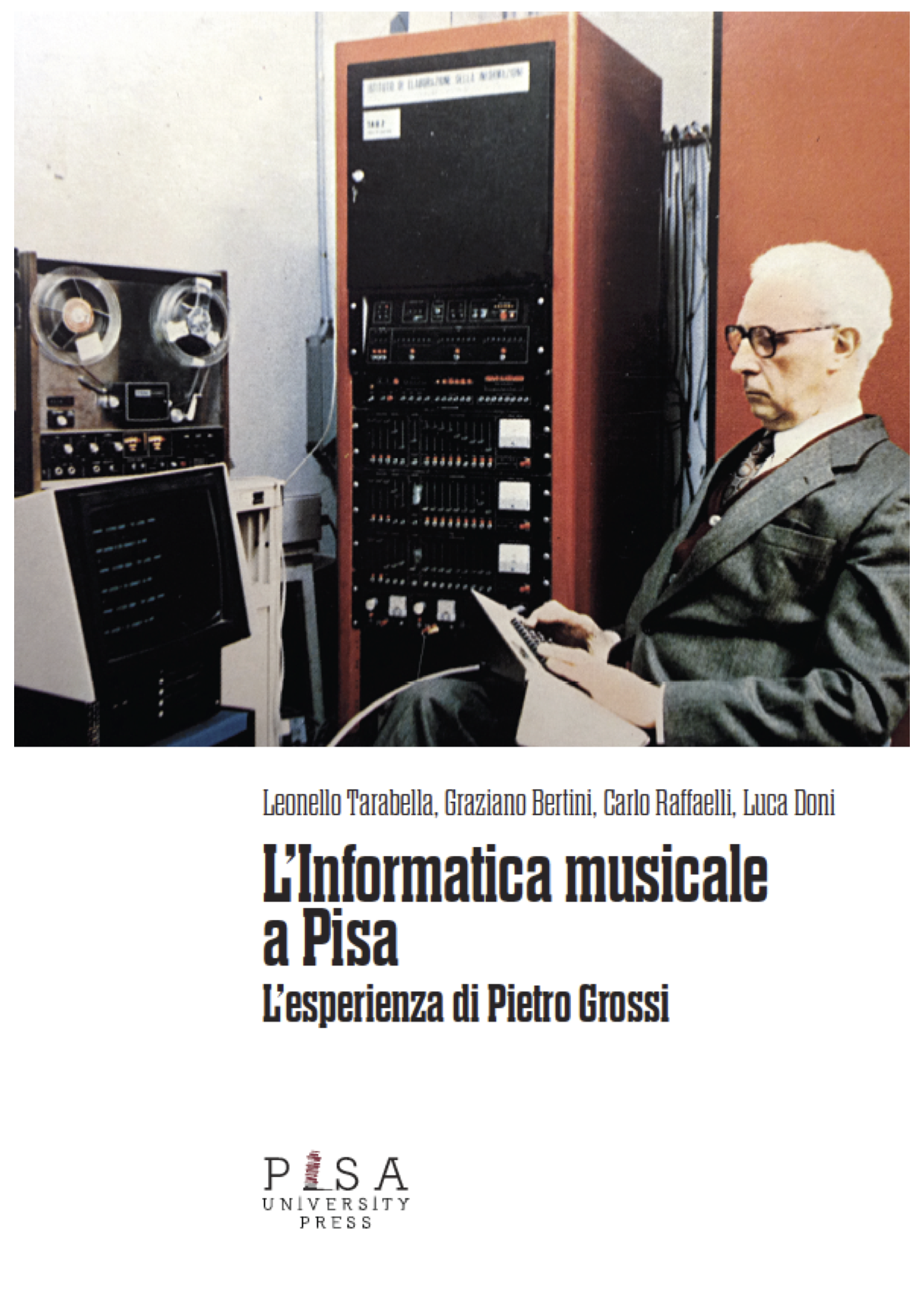
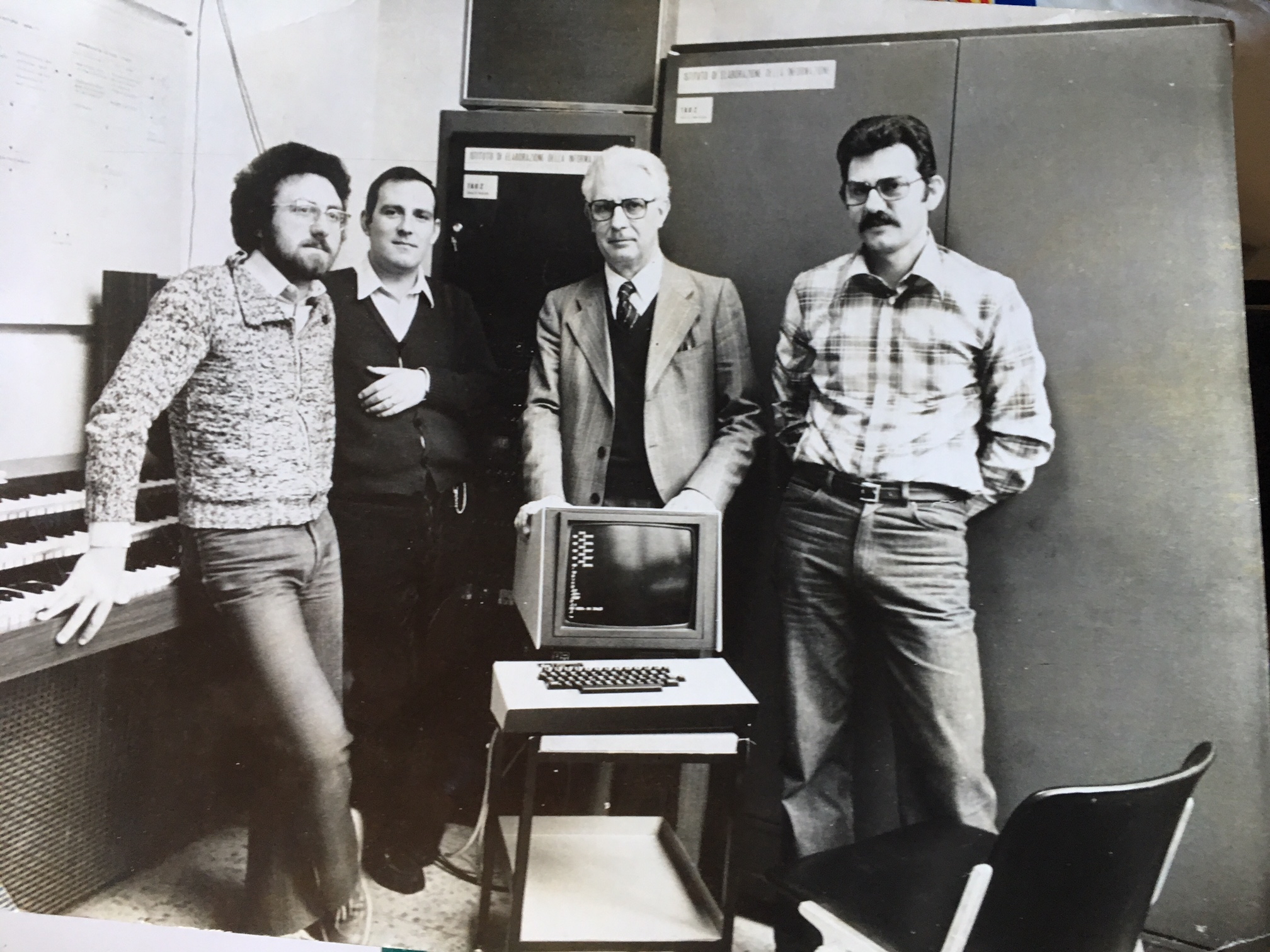
L. Tarabella, M. Chimenti, P. Grossi, G. Bertini
Pietro Grossi è il pioniere dell'Informatica Musicale in Italia. Determinanti per la sua esperienza sono stati l'incontro con Guido Torrigiani (matematico, umanista e musicologo) ed il contesto tecnologico unico e irripetibile esistente a Pisa nella seconda metà degli anni '60.
Grazie alle strutture che avevano dato vita alla CEP (Calcolatrice Elettronica Pisana) - ancora in essere all'IEI negli anni '70 - e all'intervento di Gianfranco Capriz e di Franco Denoth, fu possibile realizzare il Terminale Audio TAU2, primo sintetizzatore polifonico e politimbrico controllato da calcolatore, oggi conservato al Museo degli Strumenti per il Calcolo a Pisa
(Ex Macelli).
Tra i molti ricercatori e tecnici che parteciparono all'attavità di Grossi, furono Graziano Bertini e Leonello Tarabella, testimoni ed attori di quell'esperienza, a raccoglierne l'eredità al CNR, sviluppando in seguito originali ricerche di Informatica Musicale via via che la tecnologia offriva nuovi dispositivi e potenza di calcolo crescente.
L'Informatica Musicale a Pisa
...estratti
In una sera di primavera del 1970...
La testimonianza dell'allievo
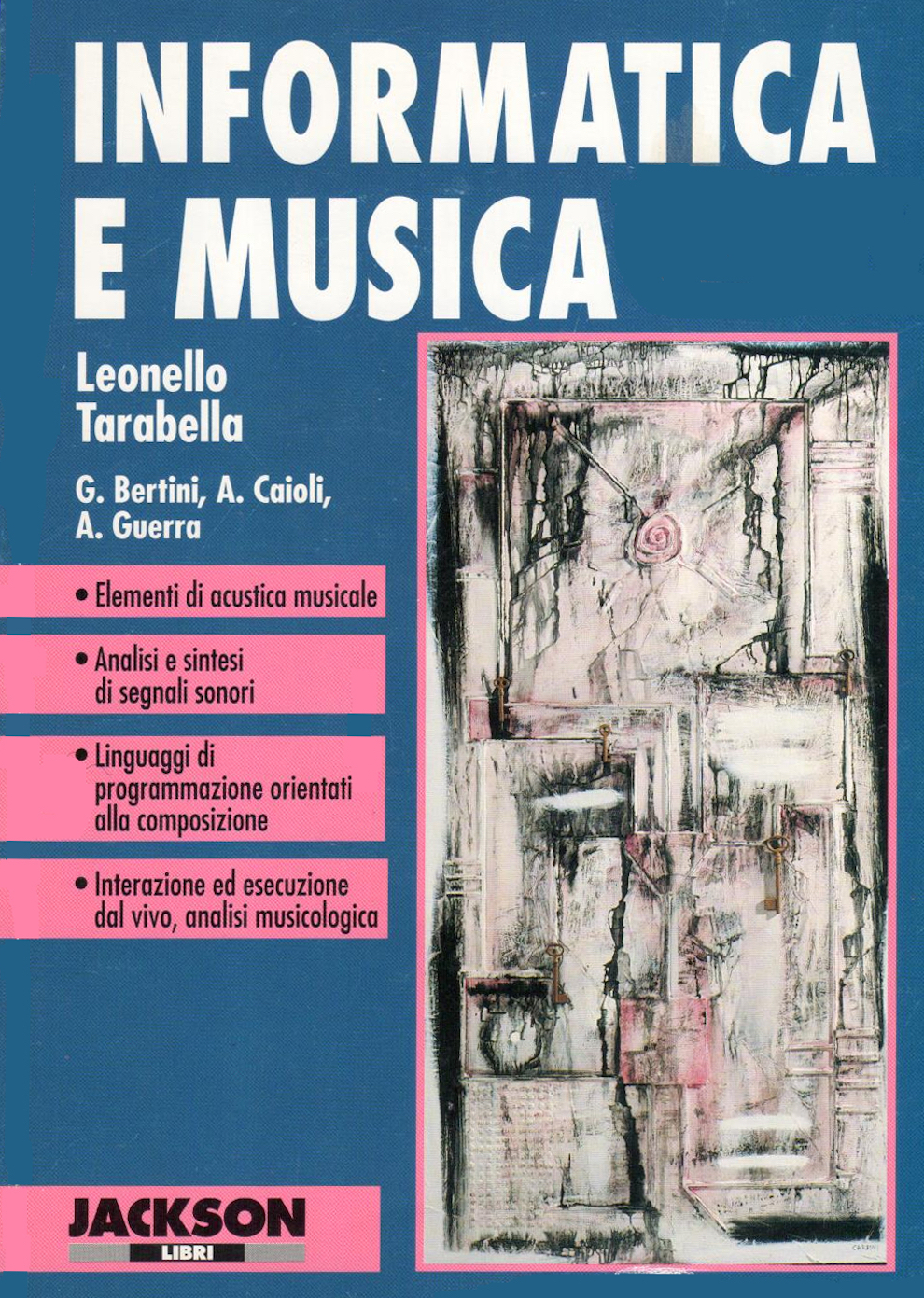
This book has been edited in 1993 by Jackson Libri.
It has been used as text book in course of Computer Music at University of Pisa and in some Italian Conservatories of Music.
Nine chapters (plus a glossary) deal with the basic topics of Computer Music: - Musical Acoustics, Analysis and synthesis of digital sound, AnalogToDigital an DigitalToAnalog conversion, MIDI, Musical Languages, Interaction, Hystorical references.